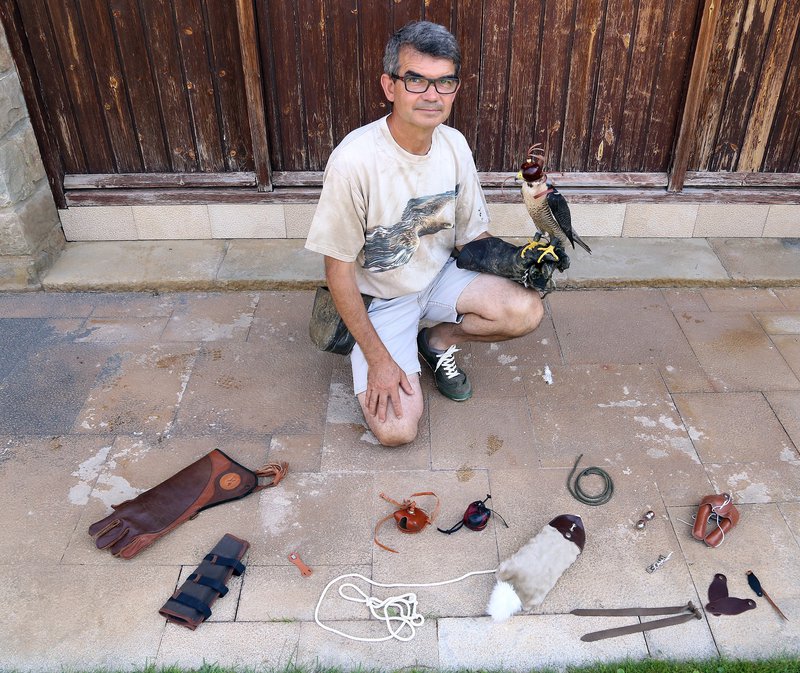Director of Cim d'àligues
Rafael Farriols
Sant Feliu de Codines is home to Spain's only environmental educational centre specialising in birds of prey. Its main objective is to educate the public in the characteristics and peculiarities of these magnificent birds with visits and talks in the cage areas as well as observation in flight outdoors. The centre also breeds the birds in captivity and cares for injured birds.
Rafael Farriols, who set up the centre in 1994 and is the director, explains us the main tools used for his work.
The centre hosts about one hundred birds of the three main types of birds of prey: day-time hunters: eagles and falcons; scavengers, such as vultures, and night hunters, owls, and eagle owls.
1. Feedbag: Worn on either side of my belt; here I carry bird food as well as the tools of trade I may need at any particular time.
2. Gauntlet, or glove: We use two types of gloves; one that is lighter for the smaller birds such as falcons, kestrels, buzzards and another, longer, heavier leather glove for the larger species such as eagles and vultures. The glove is worn on the left hand and protects us from being scratched. These birds have quite long and sharp talons!
3. Jacket: At times it is necessary to constrain a bird to make some adjustment or to check that everything is in order.
4. Transmitter clip: Nowdays we can keep track of younger birds in training in case they get lost by radio signal.
5. Hoods: We restrict the birds' vision when we are transporting them or when we need them to be still. The hoods also serve to reduce stress.
6. Lure, or decoy: We use these in training to command the bird to return to its handler, usually there is a piece of meat attached as a reward.
7. Bewits: Some species don't actually fly too far away from the handler so it isn't necessary for them to carry a transmitter.
However, in forests or areas of thick vegetation at times these bells attached to the legs of the birds with a leather strap will help the handler find a trapped, injured or lost bird.
8. Jesses: These are soft leashes tied to the legs of the birds that stop the bird from flying off when they resting on the fist, or gauntlet of the falconer.
9. This particular bird I have here is a male, peregrine falcon.
For further information check the centre's website: www.cimdaligues.com

